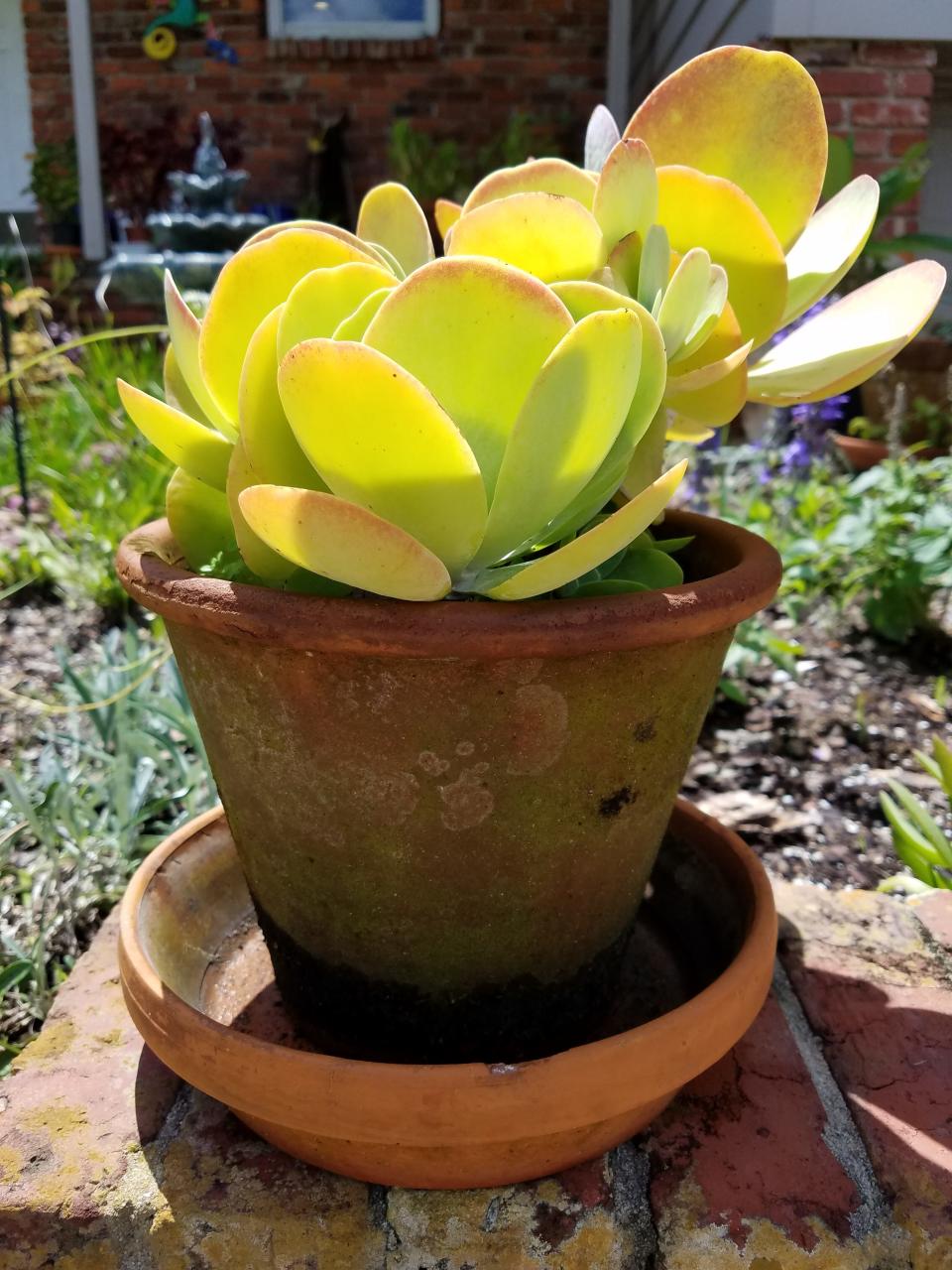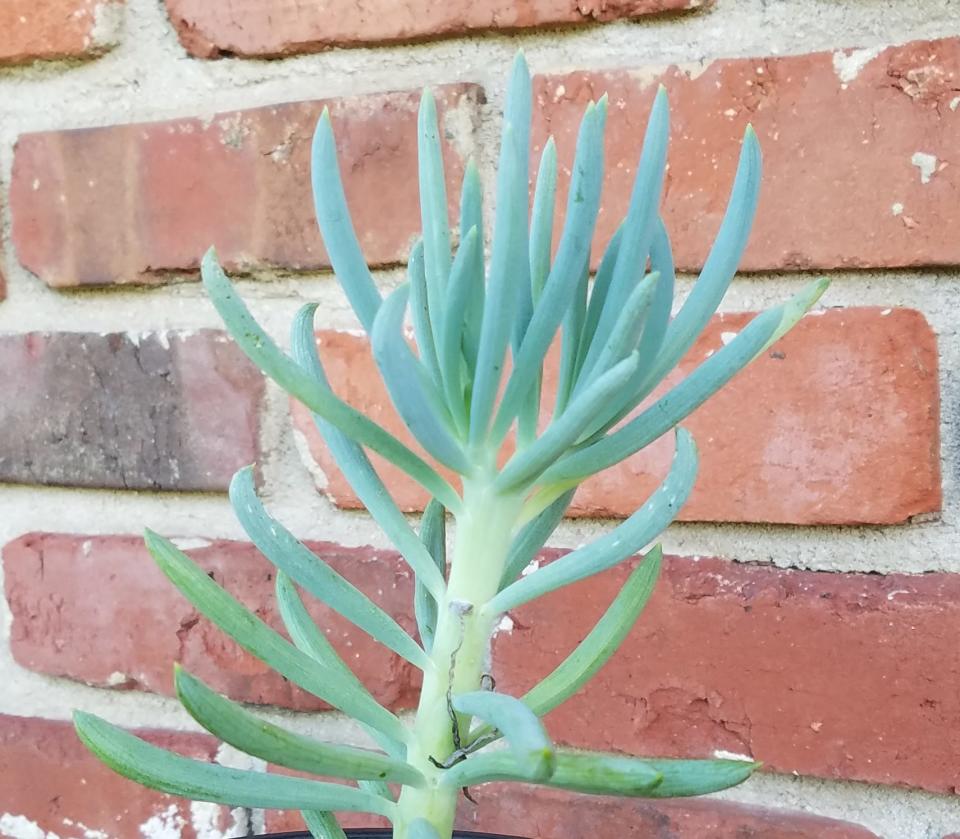Succulents make a great addition to your Brevard landscape | Sally Scalera
If you would like to add some unique plants to the landscape, porch or home, consider succulent plants. Succulents have thick, fleshy stems, leaves or roots that are designed to hold water. They come in a variety of shapes and colors, so they can be a beautiful addition to any area.
As a group, they are easy to care for because they are drought tolerant. Don’t make the mistake of thinking that means that they don’t need water, but they certainly don’t need it as often as many other plants.
Many succulents that can be found in local landscapes, such as agave, yucca, aloe, bulbine and baby sunrose. Succulent plants also make great container plants. Clay, or terra cotta, containers are wonderful for succulent plants because they “breathe” and provide excellent drainage. Use a coarse, well-draining sand mix or look for a mix specifically made for succulents and cacti.
A layer of pea gravel over the top, in place of mulch, will provide an attractive covering over the growing media.
Succulents will need supplemental water during extended dry spells, but be sure to let them dry out thoroughly between each watering.
With all the different species, there are succulents that can grow in full sun, partial shade, or even full shade. Generally, bright but indirect sunlight is best, though different species have varying requirements.
A succulent plant, or any plant for that matter, that becomes leggy and produces longer internodes between the leaves, needs more sunlight. Plants grown in containers can be moved easily, but when moving them to a sunnier location, do so gradually, to prevent burning the leaves.

Light conditions can also result in different colored foliage. Take for example the flapjack plant, Kalanchoe luciae, which can grow in total shade all the way to full sun. When growing in full sun, the leaves turn burnt orange, but in full shade, the leaves are a beautiful soft green.
There are a wide variety of growth forms that succulent plants exhibit including rosettes, upright, agave-type, paddle-shaped and trailing/groundcovers.
Examples of rosette-shaped succulents would be echeveria, sempervivum, sedum and aloe.
Echeveria is a large group that typically stays small, only reaching a couple of inches across. Water should not be allowed to sit in the rosette’s center, as they are prone to rotting or disease. It is also a good idea to remove dead leaves from the bottom of the plant as it grows to help it stay healthy and attractive.
Sedums have a unique look, and they come in a variety of heights, ranging from just a few inches up to 3 feet tall. They can also have a trailing form, which looks graceful spilling over the edge of a container or hanging basket.
Succulent genera that have an upright growth habit include senecio, cereus, kalanchoe and sansevieria.
I have mentioned Sansevieria in a previous article because they make great houseplants that can improve indoor air quality and can provide oxygen at night when you are sleeping.

Senecio "Blue Chalk Sticks" make a great vertical statement that displays bluish foliage.
There are many Kalanchoe species that grow upright such as K. tomentosa "Panda," which produces fuzzy foliage, giving it great tactile appeal.
The succulents that fall under the agave-type growth habit include agave, yucca, furcraea, aloe and dyckia.
Three of the five are common here in Florida with many examples found in local landscapes. The agave and yucca provide tall elements, though some are armed with spines, so choose their planting location carefully.
Crassula, portulaca and kalanchoe produce paddle-shaped foliage.
The common houseplant Jade plant, Crassula ovata, can be grown inside or outside. When the plants are mature, they produce gorgeous flowers.
Portulaca molokiniensis has an interesting growth habit that I have seen in photos online. Kalanchoe luciae, flapjack or paddle plant, that I mentioned earlier is one of my favorite plants because it can grow everywhere. Grow it in your home, even in a location that is the furthest from a window, as well as in every light condition throughout your yard. There is also a variegated flapjack plant, Kalanchoe luciae "Fantastic," that is very attractive.
Trailing and groundcover succulents include the genera portulaca, aptenia, doreanthus, sedum, bulbine, senecio and carpobrotus, just to name a few.
Baby sun rose, Aptenia cordifolia, is a gorgeous ground cover that grows best in partially shady to shady locations, though it can handle full sun in the winter. I have even had baby sun rose growing in a hanging basket and watched a hummingbird drink nectar from the flowers.
Bulbine frutescens, a succulent groundcover, is found in local landscapes, and it spreads by rhizomes to create clumps 2 to 3 feet wide. The flowers come in yellow, orange or in combination, and they attract bees.
Karkalla or pig face, Carpobrotus rossii, is a succulent ground cover from southern Australia. It produces gorgeous flowers and is one of the plants typically referred to as an ice plant.
String of pearls, Senecio rowleyanus, is another trailing succulent that may be easy to find at a local garden center. It is typically grown in hanging baskets.
Their striking looks and low-maintenance care make succulents a great addition, both inside and outside of your home. Our local garden centers carry a wide selection of succulents, many of which are planted in decorative containers that would be great gifts. So, if you don’t already have plans this weekend, check out the garden centers to see if you can find some new houseplants, specimen plants for your yard, and great gifts.
Sally Scalera is an urban horticulture agent and master gardener coordinator for the University of Florida’s Institute of Food and Agriculture Sciences. Email her at sasc@ufl.edu.
This article originally appeared on Florida Today: Succulents are easy to grow inside or outside your Space Coast home

